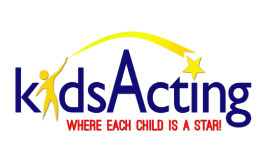One look at a child, and you know she is meant to be a body in motion. Why then did schools begin reducing recess and physical education time? Many blame it on standardized testing, as the need to demonstrate good scores affected the prioritization of academics at the expense of play and movement.
Thankfully, recent evidence regarding the importance of movement for children and its positive effects on learning has ushered a shift in thinking. School administrators and parents are pushing to bring back movement, both in small breaks built into the school day and in more formal time periods, such as recess and physical education.
Modern Problems
It could be argued that physical activity at school is even more important health-wise today, as studies show that children are less physically active outside of school than in previous years. In fact, a 2017 study published in the journal Health Affairs found that fewer than one in three children ages 8-11 gets the recommended amount of 25 minutes of intense physical activity three times a week. One theory: screen time has replaced spontaneous and organized play. Another theory suggests that as sports have become more organized and competitive, their participation costs have increased. This higher barrier to entry keeps more children from being able to play.
Academics are positively affected by movement. Several studies have shown that to achieve peak learning in children, there must be a break period after spans of concentrated instruction. It’s not enough to shift from one task to another; students need an actual break in learning to reduce the accumulation of stress and distractions that interfere with learning. These little breaks result in greater attentiveness and productivity in the classroom. Interestingly, the researchers’ findings held true even when students spent most of their break time socializing.
This makes sense. As adults, if we’re doing a difficult task at work or at home, we benefit from stepping back to “take a breather.” Even a short break revives us after concentration fatigue sets in. Although what our children are learning might not seem like hard work to us, it’s good to remember that for them, it’s all new. They truly experience learning as work.
Exercise in Action
The act of physically moving increases blood flow and oxygenation in the brain. This in turn boosts neural connectivity and stimulates nerve cell growth in the hippocampus, the center of memory and learning. Conveniently, it doesn’t take an excessive amount of time to switch students from a mode of brain-fatigued-and-overloaded to a mode of refreshed-and-ready-to-attend-and-focus. Just a short five- to ten-minute break can work wonders and increase productivity overall.
There’s also a very important benefit to physical activity at school, beyond academics. Recess promotes social and emotional learning through children’s play with peers. It’s during recess that children can practice and role-play various social skills, such as cooperation, problem-solving, sharing and negotiation. They’re also offered opportunities to practice self-control when play doesn’t go their way. Students bring their gains in these areas back to the classroom and improve the social climate of the room.
Rules for Recess
Not all movement and recess are created equal, however. William Massey, assistant professor of health and human sciences at Oregon State University, says there are certain recess parameters that must be in place to see related improvements in behavior and learning during the school day. First, adults must set up a system that encourages children to be active and to play, rather than sitting or standing around. Second, there must be green space and appropriate equipment for children to utilize. Finally, it’s important that positive social behaviors are taught and expected. When this last piece is lacking, schools often see an increase in fighting, bullying and negative language, even in a setting with enough physical activity.
There are also differences in benefits, depending upon the time of day that students have recess. Schools traditionally schedule recess for the afternoon, after lunch-time. However, many school wellness councils are moving to the “Recess Before Lunch” concept. Studies have found that when students have recess before lunch, they spend more time eating and waste less food, probably because they’ve had a chance to stoke their appetites. Lunchroom behavior improves, as well. As students spend less time sitting idle at the table, they have less time to become bored and disruptive.
The ideal school day provides time for recess and physical education for all students, but also works brief movement breaks in between learning sessions. A well-rounded school movement plan leads to academic, behavioral, social and emotional and health gains. Schools are beginning to recognize that it’s a no brainer — let’s get our children moving!
Alison Bogle is an Austin-based freelance writer and mom of three.
















